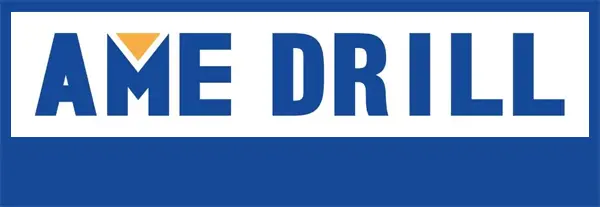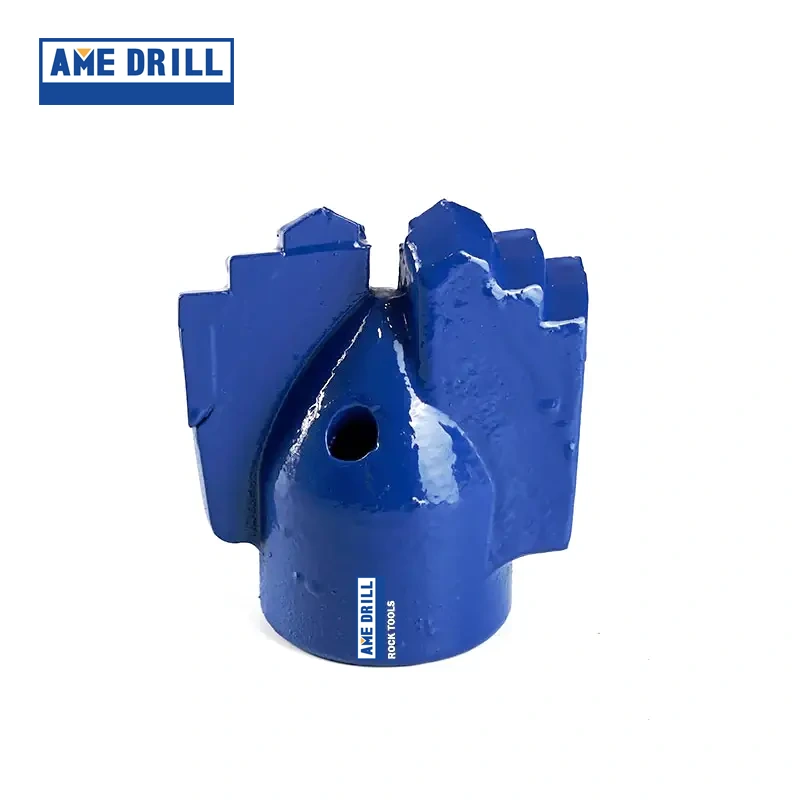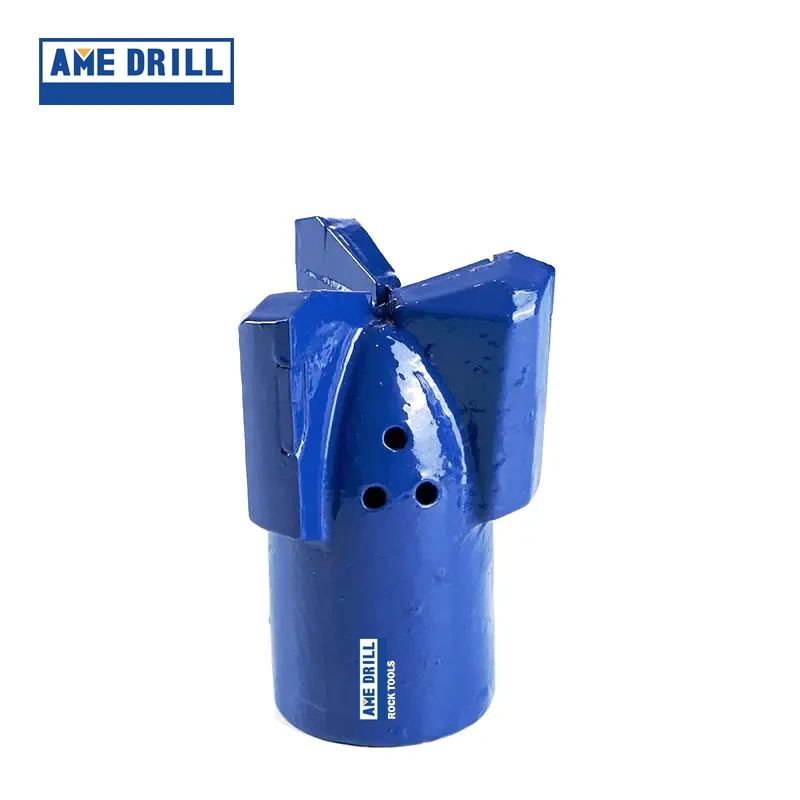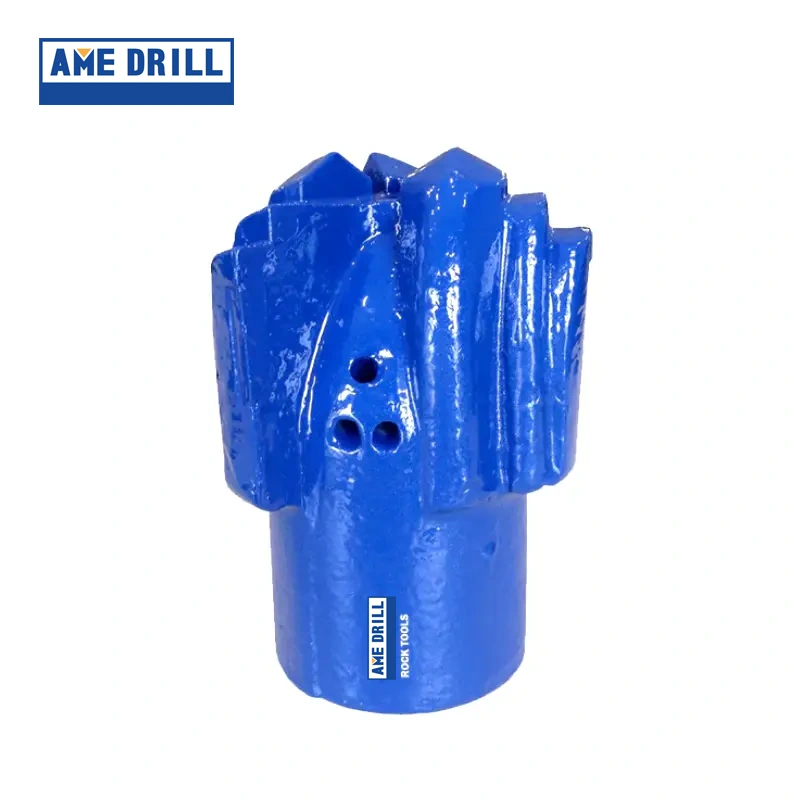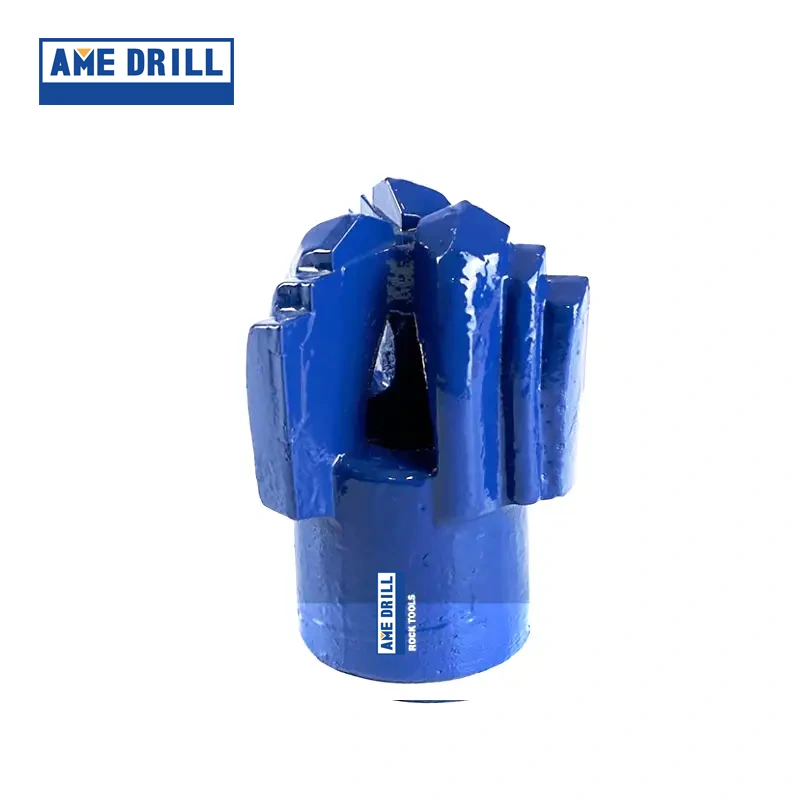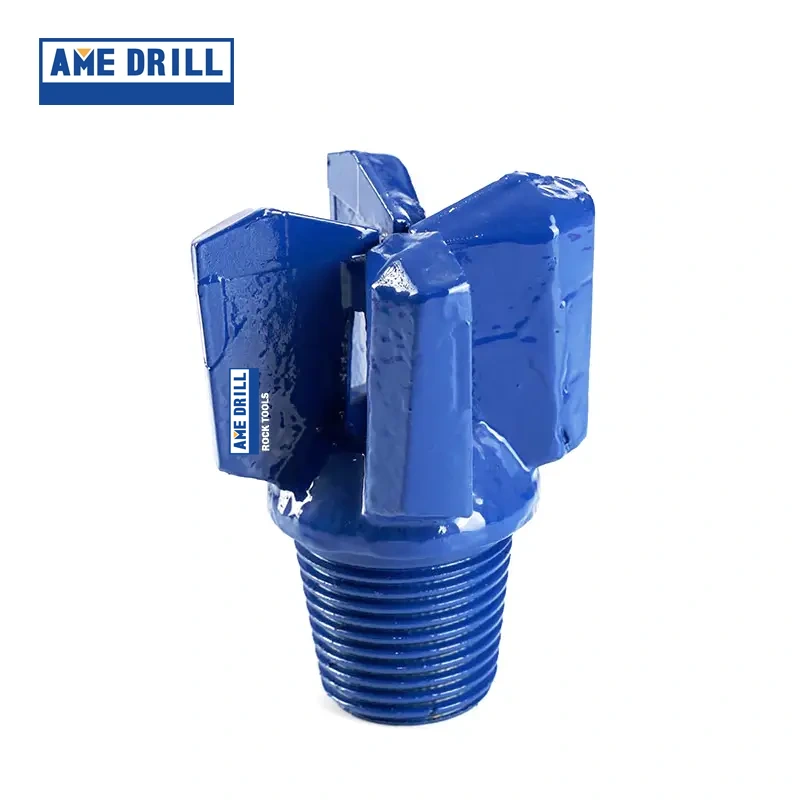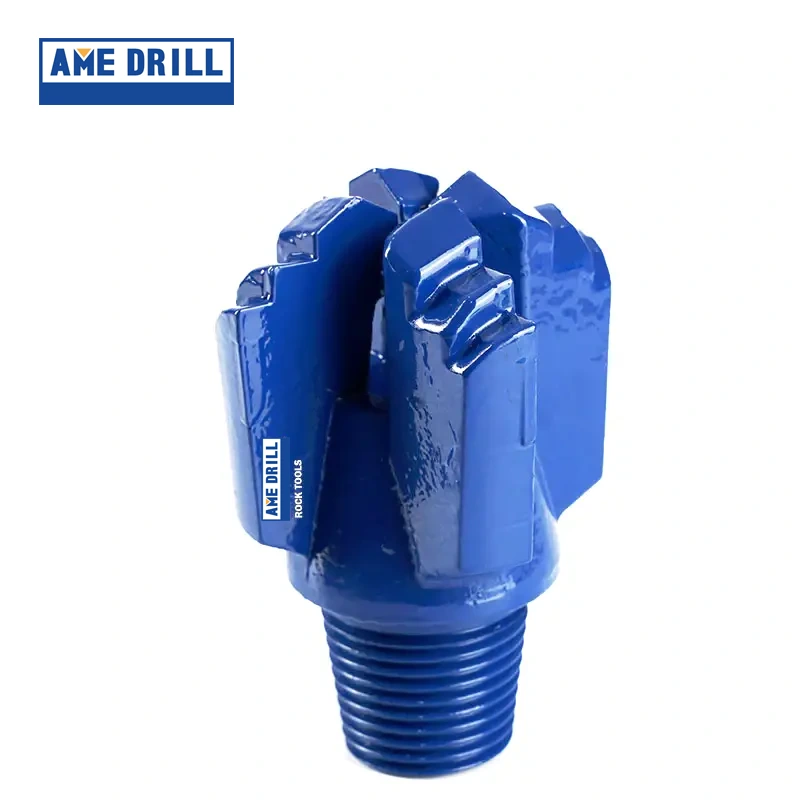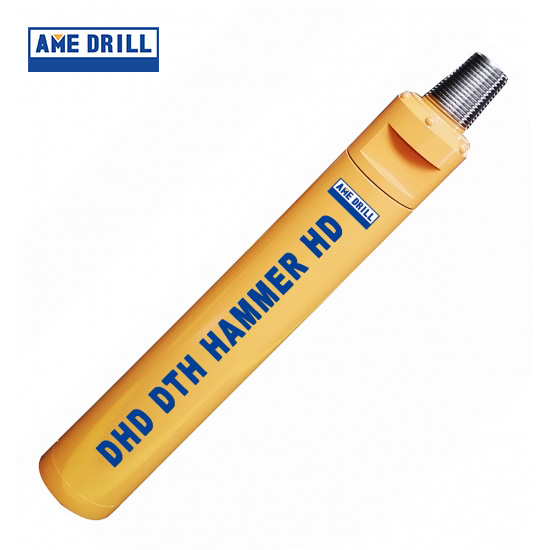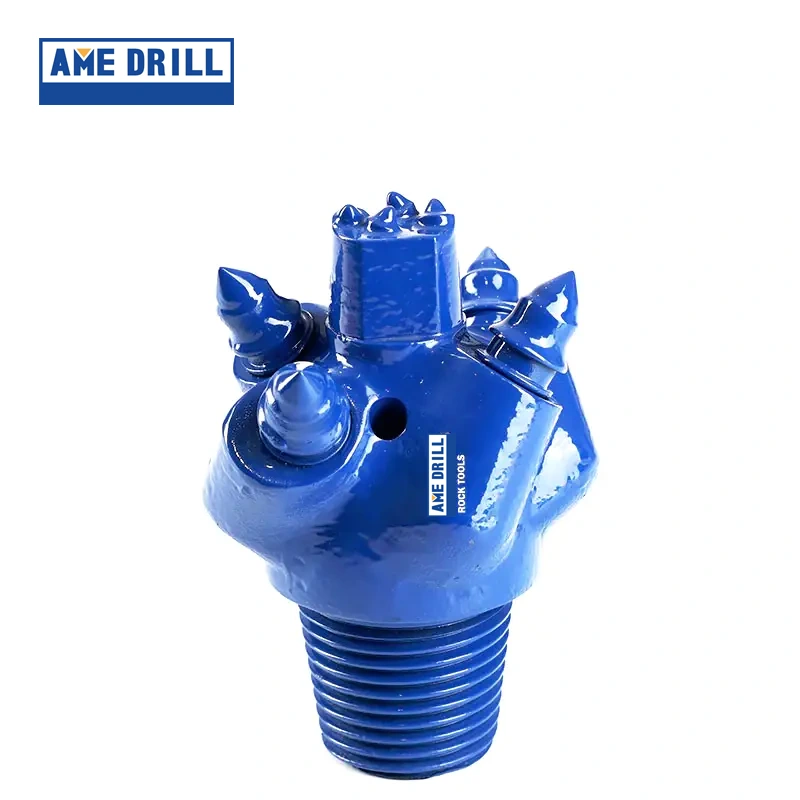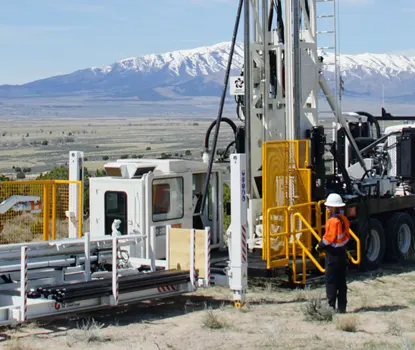1. Introduction
Rotary drill bits are the workhorses of modern drilling technology. Positioned at the very bottom of the drill string, they serve as the cutting interface between engineered equipment at the surface and the subsurface formations being penetrated. Without them, no borehole could be advanced, whether for extracting hydrocarbons, accessing groundwater, blasting rock in mines, or installing foundations for skyscrapers.
Although the concept of a rotating tool cutting into the earth may seem straightforward, rotary drill bits are the result of decades of engineering refinement. Their design reflects a balance of mechanical efficiency, material science, and geological adaptation. This article explores what rotary drill bits are used for, how they function, the various types available, their applications across industries, the factors that guide selection, and the challenges operators face in maximizing performance.
Comparison of Main Rotary Drill Bit Types
| Bit Type | Mécanisme de coupe | Typical Formations | Avantages | Limitations |
|---|---|---|---|---|
| Roller-Cone (Tricone) | Crushing + gouging | Mixed, fractured, abrasive | Versatile, handles interbedded layers, cost-flexible | Bearings wear out, lower ROP in soft rock |
| PDC (Fixed Cutter) | Shearing | Soft to medium-hard, homogeneous | High penetration rates, durable cutters, steerable | Cutter damage in hard/impact-prone zones |
| Diamond Impregnated | Abrasion + grinding | Very hard, abrasive (quartz, granite) | Extremely durable in hard rock | Lower ROP, higher cost |
| DTH Hammer Bits | Percussion + rotation | Ultra-hard, dense formations | Penetrates hardest rock efficiently | High air/energy requirement |
| Core Bits | Cutting + coring | Exploration, geotechnical | Retrieves intact core samples | Slower, limited to sampling |
2. Basic Working Principle of Rotary Drill Bits
The fundamental role of a rotary drill bit is to convert rotational energy and downward force into rock fragmentation. As the drill string rotates, the bit applies weight-on-bit (WOB) to the formation. The rock is broken down by one of three mechanisms:
- Shearing – cutting or slicing through rock, typical of fixed-cutter bits like polycrystalline diamond compact (PDC) designs.
- Crushing – compressing the rock until it fractures, common in roller-cone (tricone) bits.
- Abrasion – grinding down very hard formations, often using diamond-impregnated matrix bits.
Equally important is the role of fluide de forage (mud or air). This fluid flows down the inside of the drill string, exits through nozzles in the bit, and circulates back to the surface. Its functions are to:
- Cool the bit, preventing thermal degradation.
- Remove cuttings from the borehole, avoiding clogging or regrinding.
- Stabilize the borehole walls.
The result is a continuous cycle: the bit fractures rock, the fluid clears debris, and the borehole extends downward.
Recommended products
Common Applications of Rotary Drill Bits
| Industry | Bit Types Commonly Used | Purpose |
|---|---|---|
| Oil & Gas | PDC, Tricone, Hybrid | Drilling exploration and production wells |
| Mining & Quarrying | Large-diameter Tricone, DTH | Blast-hole drilling for ore extraction |
| Water Wells | Tricone, PDC | Accessing aquifers, municipal and agricultural supply |
| Geothermal | PDC, Tricone, Diamond Impregnated | Penetrating high-temperature, hard formations |
| Civil Engineering | Tricone, Core Bits | Foundation drilling, soil/rock investigation, micropiles |
| HDD (Utilities) | PDC, Reamers | Installing pipelines and cables under rivers, highways, or urban areas |
3. Main Types of Rotary Drill Bits
Rotary drill bits are not one-size-fits-all. Engineers select from several categories, each optimized for specific rock types and operational demands.
3.1 Roller-Cone Bits (Tricone Bits)
Developed in the early 20th century, roller-cone bits remain a cornerstone of drilling. They feature three rotating cones, each studded with steel teeth or tungsten carbide inserts. As the cones roll across the formation, they crush and gouge rock.
Advantages:
- Versatile across a wide range of formations.
- Tolerant of mixed or fractured geology.
- Available in sealed or air-cooled bearing designs.
Limitations:
- Higher mechanical complexity (bearings and seals are failure points).
- Lower rates of penetration in homogeneous, soft-to-medium formations compared to PDCs.
3.2 Fixed-Cutter Bits (PDC and Diamond Bits)
Fixed-cutter bits have no moving cones; instead, they use cutters fixed in place.
- PDC Bits: Utilize synthetic diamond cutters brazed to the bit body. They shear the rock in a continuous slicing motion, achieving high penetration rates in many formations.
- Diamond Impregnated Bits: Contain natural or synthetic diamond particles embedded in a matrix body. They excel in very hard, abrasive formations where other bits fail.
Advantages:
- Few moving parts, resulting in potentially longer service life.
- Very high efficiency in appropriate formations.
- Well suited for directional and horizontal drilling.
Limitations:
- Sensitive to impact and vibration in heterogeneous formations.
- Can be costly if used in unsuitable geology.
3.3 Specialized Bits
- Down-the-Hole (DTH) Hammer Bits: Used with pneumatic hammers in extremely hard rock drilling.
- Reamers and Hole Openers: Enlarge existing pilot holes to larger diameters.
- Core Bits: Retrieve cylindrical rock samples for geotechnical or exploration analysis.
| Bit Type | Taux de pénétration (ROP) (m/hr) | Average Bit Life (meters drilled) | Relative Cost | Best Environment |
|---|
| Tricone | 3 – 10 | 150 – 300 | Medium | Mixed formations, fractured rock |
| PDC | 8 – 25 | 500 – 2,000 | High | Soft–medium, homogeneous, shale formations |
| Diamond Impregnated | 1 – 5 | 2,000 – 5,000 | Very High | Ultra-hard, abrasive crystalline rock |
| Marteau DTH | 2 – 8 | 100 – 400 | Medium–High | Extremely hard rock requiring percussion |
4. Industrial Applications of Rotary Drill Bits
Rotary drill bits are used in an impressive range of industries:
4.1 Oil and Gas Exploration
Rotary drill bits are indispensable in drilling oil and gas wells. Their design directly influences rate of penetration (ROP), stability in directional wells, and overall drilling economics. In soft shales, PDC bits dominate, while in abrasive or interbedded formations, roller-cone bits remain valuable.
4.2 Mining and Quarrying
Large-diameter rotary blast-hole bits are common in open-pit mining. They drill holes for explosives, enabling efficient rock fragmentation and ore recovery. These bits are built for durability, as downtime in mining operations carries immense costs.
4.3 Water Wells and Geothermal Drilling
Accessing groundwater and geothermal reservoirs requires penetrating diverse geological strata. Contractors often switch between bit types as they encounter sand, gravel, shale, and bedrock. PDCs and tricones are both widely used.
4.4 Construction and Geotechnical Engineering
Civil engineers rely on rotary drilling for deep foundations, micropiles, retaining structures, and soil investigation. Bits are selected based on whether the project demands speed, precision, or core recovery.
4.5 Utility and Horizontal Directional Drilling (HDD)
Rotary bits guide boreholes beneath rivers, roads, or urban infrastructure for pipelines and cables. PDC-style bits are preferred due to their steerability and consistent performance.
Common Bit Failure Modes
| Failure Mode | Cause | Impact |
|---|---|---|
| Bearing Failure | Heat, contamination, seal failure (tricone) | Sudden loss of function |
| Cutter Wear | Continuous contact with abrasive formations | Reduced penetration rate, inefficient drilling |
| Bit Balling | Accumulation of sticky cuttings (shales, clays) | Blocks flow channels, stalls drilling |
| Impact Damage | Hard stringers, unexpected inclusions | Cutter chipping, catastrophic breakage |
| Thermal Degradation | Insufficient cooling in high-temperature environments | Diamond cutter loss, shortened lifespan |
5. Factors Influencing Bit Selection
Choosing the right rotary drill bit is a balance of geology, economics, and engineering design. Critical factors include:
- Type de formation :
- Soft, unconsolidated formations → PDC or drag bits.
- Hard, abrasive formations → roller-cones or diamond bits.
- Interbedded or fractured zones → roller-cones for tolerance.
- Operational Goals:
- High rate of penetration vs. maximum bit life.
- Directional drilling requires stability and predictable toolface behavior.
- Drilling Environment:
- Mud vs. air circulation, bottomhole temperature, and pressure.
- Economic Considerations:
- Bit cost vs. cost per meter drilled.
- Potential downtime for bit replacement.
6. Key Design Features and Innovations
Modern rotary bits integrate cutting-edge technologies:
- Insert and Carbide Optimization: Varied geometries (chisel, conical, spherical) and carbide grades tailored for different compressive strengths.
- Bearing and Seal Improvements: Sealed journal bearings, elastomer seals, and grease reservoirs extend bit life.
- Hydraulic Enhancements: Optimized nozzle placement ensures effective cuttings removal and cooling.
- Advanced Materials: High-strength steels, composite matrix bodies, and thermally stable diamond cutters.
- Hybrid Bit Designs: Combining roller-cone and PDC elements to exploit multiple cutting mechanisms.
- Digital Modeling: Computational simulations predict bit-rock interactions, helping engineers optimize designs before deployment.
7. Challenges and Limitations
Despite technological progress, rotary drill bits face operational risks:
- Wear and Abrasion: Continuous contact with abrasive rock leads to cutter dulling.
- Bearing Failure: Contamination, overheating, or seal failure can stop a roller-cone bit prematurely.
- Bit Balling: Accumulated cuttings can block fluid pathways and reduce efficiency.
- Vibration and Instability: Stick-slip, lateral vibration, or whirl can shorten bit life.
- Impact Damage: Sudden contact with unexpected hard inclusions may fracture cutters.
Operators manage these risks through proper bit selection, real-time drilling monitoring, and continuous performance evaluation.
8. Case Examples
8.1 Mining Blast-Hole Drilling
A surface mine using large rotary blast-hole bits selected tungsten carbide insert tricones. By optimizing insert geometry and bearing design, the mine extended bit life by 20%, reducing downtime and improving cost per ton of ore extracted.
8.2 Water Well Drilling in Mixed Formations
A contractor drilling a municipal well encountered alternating layers of gravel, clay, and shale. Switching from a PDC to a tricone bit in the fractured shale allowed them to maintain penetration without excessive vibration or cutter damage.
8.3 Oil and Gas Section Drilling
In a deep shale gas well, engineers used PDC bits for long horizontal sections, benefiting from high ROP and stability. However, when drilling through a hard carbonate interval, they switched to a roller-cone bit to tolerate impact loads and avoid cutter damage.
9. Conclusion
Rotary drill bits are far more than simple cutting tools — they are highly engineered interfaces between man-made systems and natural geology. Their applications span oil and gas exploration, mining, construction, water wells, geothermal drilling, and infrastructure installation.
The choice of bit type, design, and operational parameters directly influences drilling efficiency, project cost, and success. With continuous advances in materials, cutter technology, and digital modeling, rotary drill bits are evolving toward longer life, greater penetration rates, and lower overall cost per meter drilled.
In short, rotary drill bits are critical enablers of modern industry, making possible everything from the electricity that powers our homes to the foundations beneath our cities.
